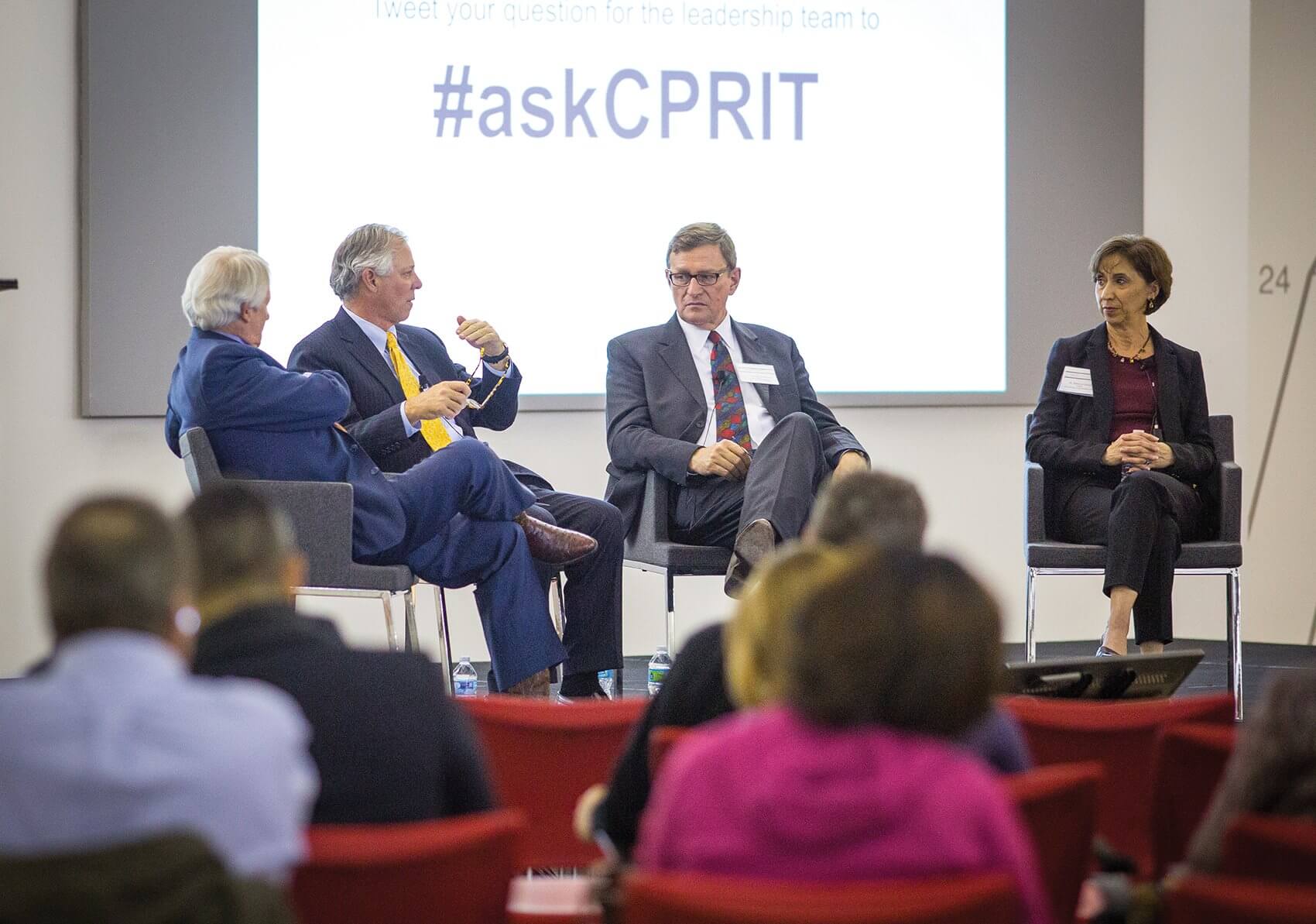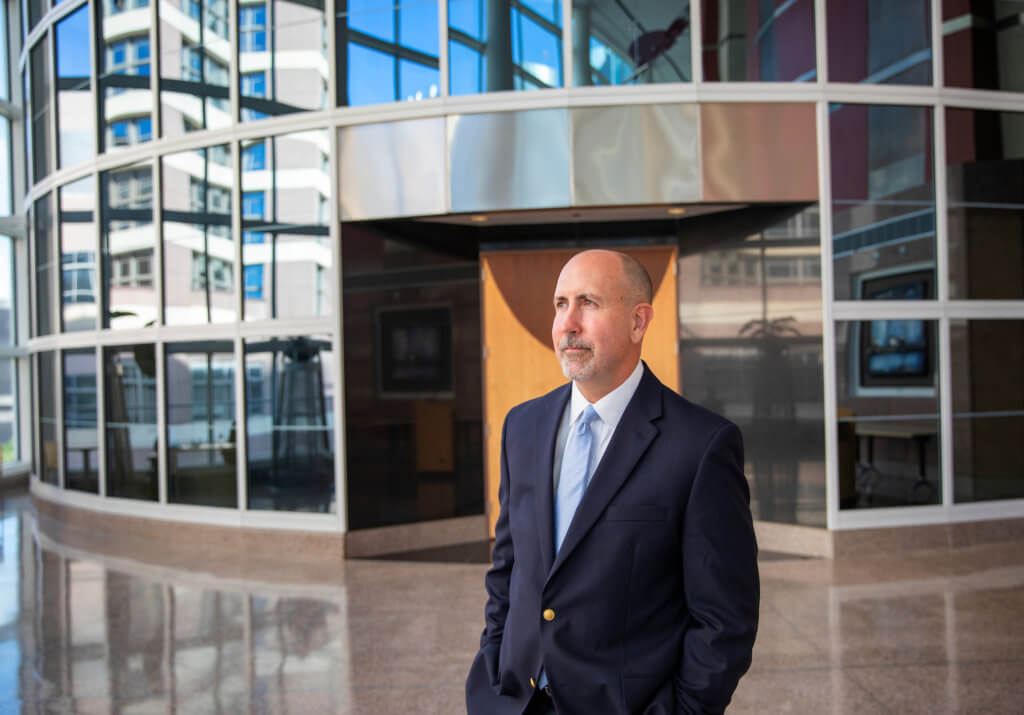Fueling the Future

At academic medical institutions, from Baylor College of Medicine to The University of Texas MD Anderson Cancer Center, researchers developing innovative cancer treatments monitor the hypnotic whir of centrifuges and peer inquisitively through microscopes. At the same time, the metronomic drip of chemotherapy medication at a patient’s bedside offers the promise of hope and recovery. While companies construct bridges across the translational chasm spanning between academic insights and the marketplace, preventive efforts seek to reduce the burden of cancer by leveraging existing knowledge. But what spurs all of these developments?
In 2007, Texas voters overwhelmingly approved a constitutional amendment to establish the Cancer Prevention and Research Institute of Texas (CPRIT), authorizing the state to issue $3 billion in bonds to fund groundbreaking cancer research and prevention programs across the state. CPRIT’s mission is to expedite innovation in academic research and product development research and to enhance access to evidence-based prevention programs throughout the state.
“I think the biggest question that the Legislature and the citizens of Texas had to deal with when CPRIT was enacted in 2007 was very simple: ‘Why cancer?’” said Wayne Roberts, chief executive officer of CPRIT. “The reason is that cancer affects everyone—regardless of age, sex, ethnicity, race or geographic location. It has an impact on all of us, whether you’ve been diagnosed yourself or not.”
Cancer’s impact in Texas is profound. Last year there were more than 119,000 Texans newly diagnosed with cancer and 44,150 deaths, according to the Texas Cancer Registry. Based on an analysis by The Perryman Group, cancer cost the state $162 billion in reduced annual spending last year. In addition, an estimated 786,000 jobs were lost due to cancer treatment, morbidity, mortality, and associated spillover effects.
In 2014, the National Cancer Institute awarded around $200 million in grants in the state of Texas. CPRIT awarded about $250 million for prevention, academic research and product development research—more than doubling the investment in cancer in the state.
“Since CPRIT was created by a constitutional amendment, the money that we have and spend is the money of the people of Texas,” affirmed Thomas C. Goodman, Ph.D., chief product development officer at CPRIT. “We want to make sure that we spend every nickel of that in the best way that we can to find new treatments and cures for cancers.
“That trajectory has several dimensions,” he added. “First and foremost, the engine for this enterprise is academic research going on at places like MD Anderson and other great institutions here in Texas, which provides the energy to drive the ideas and innovations. If you think about it, our program is like an automobile. The research is an engine—without the research nobody goes anywhere—but you still need a transmission, a differential and a great set of wheels. We try to provide that whole continuum.”
In the realm of academic research, CPRIT is giving priority to the prevention and research of rare and hard-to-treat cancers, including pediatric and adolescent cancers. There is also an emphasis on research around computational biology and analytic methods.
“We want to continue to recruit the very best cancer research talent in the state of Texas,” added Roberts. “In terms of what CPRIT is going to leave behind, I think it’s going to be the legacy of these researchers. If you stop and think that some of these junior faculty members have 25-30 years of productive research life left in them, CPRIT has already brought in over 2,000 years of research talent to the state of Texas. I predict that by the time that Texas is through with CPRIT, we will have the finest cluster of cancer expertise in the world, if we don’t already.”
Within the world of product development, CPRIT strives to bring companies to Texas that are likely to prompt commercialization, help existing companies evolve, and fund organizations that are likely to fill in the valley of death in scientific research—the translation from the clinic to the bedside.
“We’re looking for scientific excellence but we also look for a product—something that’s going to make a difference in the lives of cancer patients,” said Goodman. “We’ve developed early translational research applications that aim at translating a specific insight, discovery or area of research into products. That’s something we’ve injected to stimulate this process and translate that tremendous energy in the engine into actual movement in the wheels.”
At CPRIT, another program is directed towards the prevention of cancer, specifically targeting areas and populations where disparities in incidence or mortality exist. To date, CPRIT’s prevention program has had a presence in all 254 counties across Texas—for a state that spans 800 miles, that’s no easy feat.
“In the prevention program, we are touching people every day and know we are saving lives,” said Rebecca Garcia, Ph.D., chief prevention and communications officer at CPRIT. “Just looking at lung cancer, if people stopped smoking, an estimated 80 percent of lung cancer deaths could be prevented along with 30 percent of other tobacco related cancers. If you look at all of the other preventative measures, from improving diet and a healthy lifestyle to infectious disease vaccinations, you could have a huge impact. These are all things that we already know work—we have done the research, we just need to get those preventive measures to people.”
CPRIT’s exhaustive evaluation process ensures that only the best of the best projects are considered for funding. “Our approach is very stringent and bureaucratic,” explained Roberts. “We use a peer review process that only funds merit-based applications from Texas-based entities. Our peer reviewers are from outside of the state of Texas and come from a broad cross section of backgrounds, from public health and research science to business and technology transfer. That is an intentional design to make sure that our process is as objective and free from conflict of interest as possible.”
Advancing through such a rigorous level of scrutiny almost functions as a seal of approval for companies, opening the floodgates for outside sources of funding. “What we initially encourage, with our funding, has the potential to wake up the market,” said Goodman. “CPRIT is never going to be in a position to fund a project all the way to the marketplace. But while we may only provide a fraction of what is needed to bring a product to market, we’re also providing a mark of quality that invites the rest of the investing world to look more closely.”
Recently, CPRIT’s leadership team visited the Texas Medical Center to provide a crash course on their mission, process and progress. An informal panel allowed audience members to ask questions about the agency’s functions.
“It’s to be expected that CPRIT has to continuously justify its existence,” said Roberts during the question and answer session. “We’re using taxpayer dollars on something that everyone is interested in and they want to see us produce results. As long as CPRIT continues with its high-quality peer review process, awards the best of the best that comes our way while acting transparently and accountably, then it’s up to others to evaluate if CPRIT is a success and if we should continue in some form.”
“CPRIT aims to serve the people of Texas, as well as the cancer patients of the world, by using the resources that they have entrusted to us,” added Goodman. “The team that’s at CPRIT today is completely focused on the journey of eradicating cancer through prevention, academic research, and product development research. It’s all about utilizing those services to eradicate cancer in the future.”






